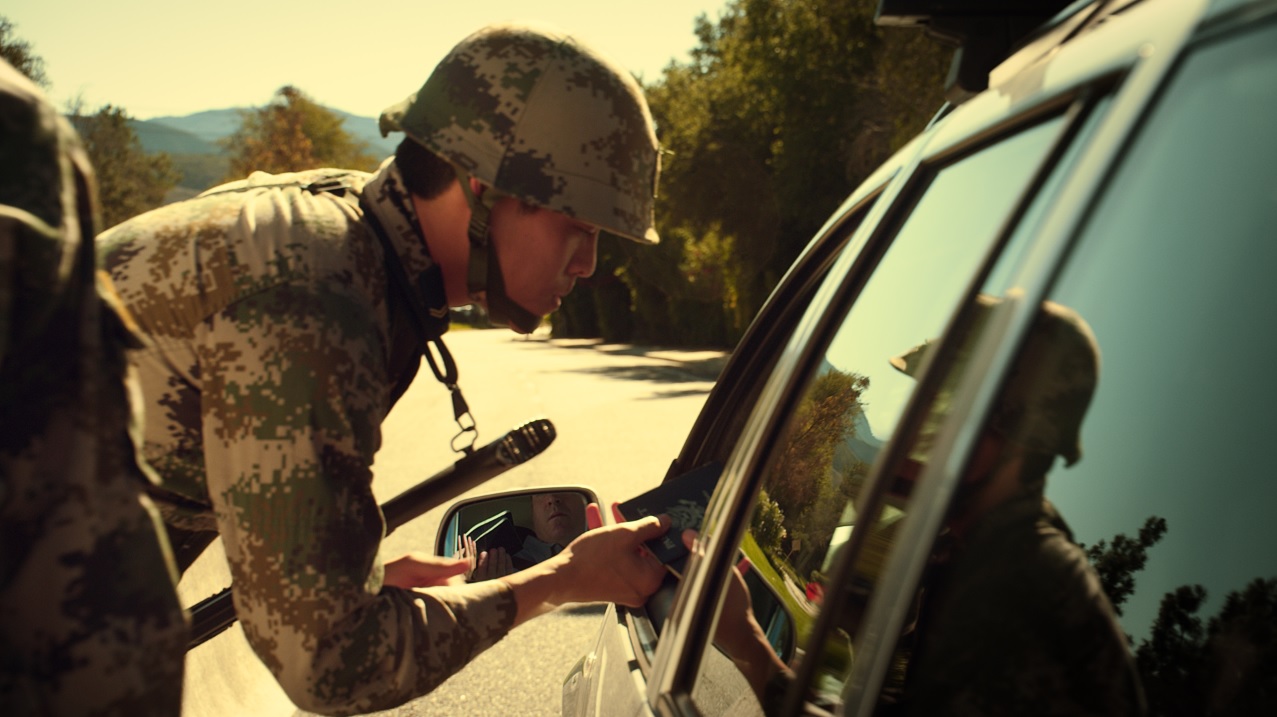


Omer Fast, 5000 Feet is the Best, 2011. Film still, single channel projection (30 mins). © Omer Fast
The attacks on New York City’s World Trade Center on 11 September 2001 and the subsequent ‘War on Terror’ declared by George W. Bush a few days later have changed the public perception of contemporary war and conflict on a global scale.
It is against this backdrop that the Imperial War Museum has put on its largest contemporary art show to date, highlighting the crucial role artists play in representing a so-called ‘post 9/11’ world. Age of Terror: Art since 9/11 features 50 works, including film, sculpture, painting, installation, photography and prints.
This large scale exhibition presents more than 40 British and international artists, including Lida Abdul, Mona Hatoum, Jenny Holzer, Grayson Perry, Gerhard Richter and Ai Weiwei amongst many others.
The exhibition is structured around four key themes:
The first section, titled 9/11, presents artist that had first-hand experience of the catastrophic events. Hans-Peter Feldmann responded immediately to the attacks by asking friends around the world to buy newspapers for him. The front covers of these newspapers, on display in the first room, highlight how media strongly shaped our perception of the tragedy in New York. In contrast, Tony Oursler’s highly personal documentary 9/11 (2001) offers an alternative perspective to the main-stream media. At the time the artist lived close to the World Trade Center and started filming from his apartment, and in the streets, during the immediate aftermath of the devastating attacks.
The second part of the exhibition, State Control, reveals how artists have reflected on issues surrounding surveillance and state control, and on how the global ‘War on Terror’ impacts fundamental human rights. Shona Illingworth’s film 216 Westbound (2014), which was gifted to the IWM by the Contemporary Art Society this year, examines the effects of post-traumatic stress disorder (PTSD) on John Tulloch, a survivor of the suicide attacks that took place in London on 7 July 2005. Following the bombings, the UK government proposed an extension of the ‘detention without charge’ period from 14 to 90 days. A photograph of Tulloch, taken shortly after the attack, was used by the media against his will to promote new anti-terror legislation.
The constant surveillance we are facing today is addressed in Ai Weiwei’s large scale marble sculpture Surveillance Camera with Plinth (2015). Cuban-American artist Coco Fusco reveals the extreme psychological techniques the US Forces use to interrogate detainees in prison camps like Guantanamo. Her film Operation Atropos (2006) simulates a prisoner of war experience with former members of the US military and female students.
The third section titled Weapons examines the psychological and political impact of modern warfare. Mahwish Chishty’s collage By the Moonlight (2013) references the folk art patterns decorating lorries across Pakistan to highlight he way that drones have become a feature of the physical, psychological and cultural landscape of her home country. Chishty studied contemporary art in the US and on her return to Pakistan she was surprised by the detailed reports circulating locally about drone strikes, in contrast to the marked absence of information about such attacks in the US.
Omer Fast’s Five Thousand Feet is the Best (2011) is based on a series of interviews conducted with a former US drone operator. The film, which switches between documentary interview footage and fictional re-enactments, reveals the psychological impact and surreal nature of engaging an enemy from thousands of miles away.
The final thematic cluster of the exhibition, Home, addresses the impact of war and conflict on landscape, architecture and the life of people across the world and in the UK. British-based artist Lida Abdul and her family fled Afghanistan after the Soviet invasion of 1979. Her film White House, made in 2005 while Afghanistan was again occupied, this time by a US-led coalition, is an exploration of the physical and psychological damage suffered by Afghans as a result of decades of war. The artist whitewashes the ruins of a former presidential palace outside Kabul. The title is a reference to both Abdul’s actions in the film and the US government’s involvement in the conflict.
The final room in this section explores the trauma by service men that have fought or witnessed the ‘War on Terror’. British artist David Cotterrell was given special access to photograph the British Army medical facilities at Camp Bastion in Helmand province. His triptych Gateway II (2009), also gifted to the IWM by the Contemporary Art Society earlier this year, presents a moment when wounded soldiers were transferred during night-time onto the plane that took them home to the UK. The huge scale of the planes contrasts with the vulnerability of their human cargo, who were sedated and probably unaware of their journey. The work reflects a period of time when casualty rates for British troops were escalating.
Age of Terror: Art since 9/11 is part of the IWM’s Conflict Now strand that was launched this year to coincide with the museum’s Centenary. It is a timely but chilling reminder of how the political, social and cultural aftershocks of 9/11 continue to reverberate around the world more than 16 years later, the ‘War on Terror’ seemingly infiltrating every area of our lives.
Christine Takengny
Curator
Imperial War Museum London, Lambeth Rd, London SE1 6HZ. Every day 10.00 – 18.00. Exhibition continues until 28 May 2018. www.iwm.org.uk